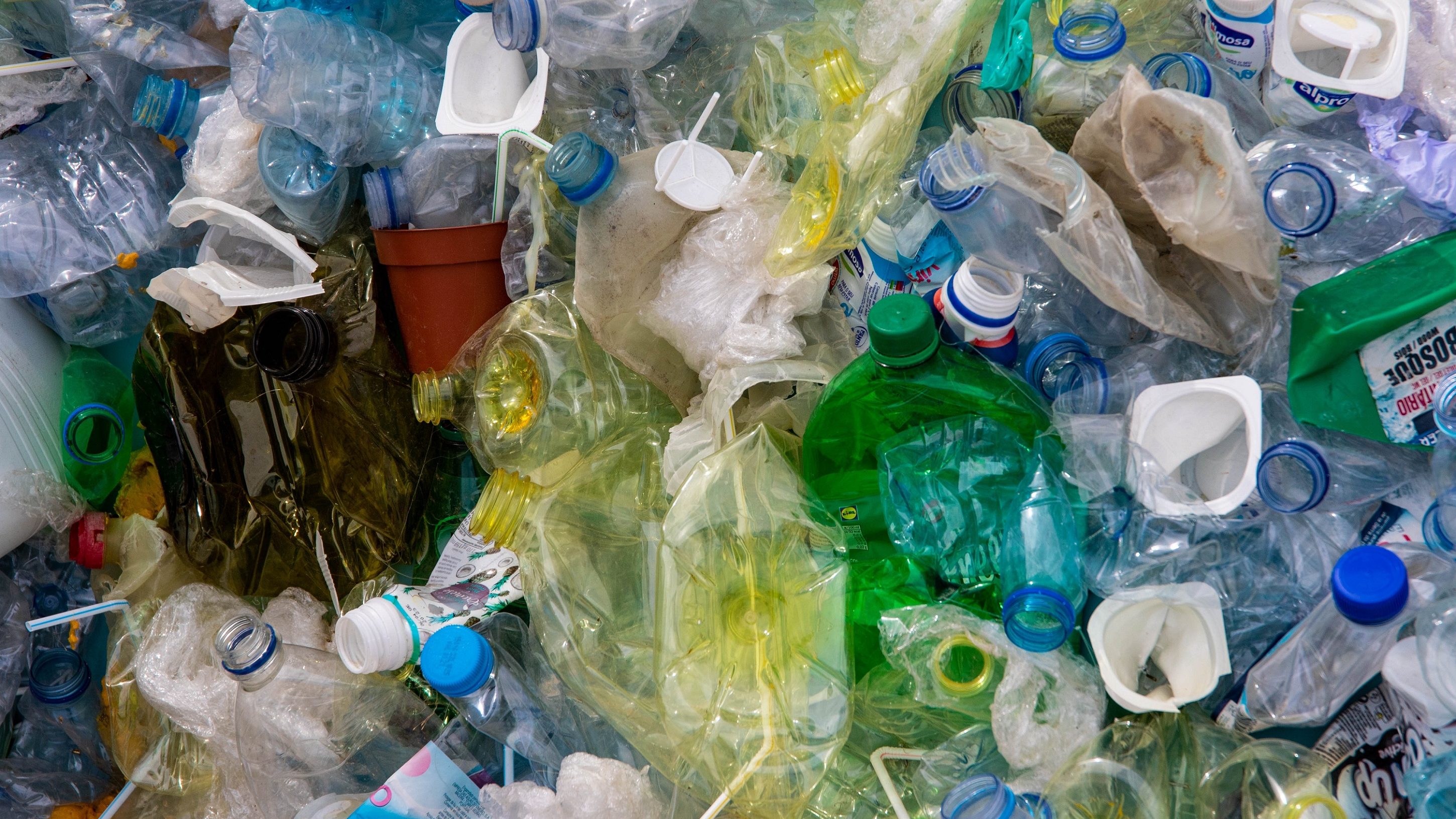
Working to help solve the global plastic waste crisis, University of Alabama researchers are developing new ways to break down plastic materials as part of a national initiative.
A $2 million grant to UA chemical engineering and chemistry researchers is one of eight research awards in a $16-million effort from The National Science Foundation’s Engineering the Elimination of End-of-Life Plastics, E3P, program.
UA researchers and students, in collaboration with Iowa State University, will work on a process to break down hard-to-recycle plastics into their chemical building blocks that can be turned into new products, including other plastics or specialty chemicals and solvents.
“We can break down plastic waste into smaller molecules that we can then separate into the respective components, each of which can have value to different industries,” said Dr. Jason Bara, project lead and UA professor of chemical and biological engineering. “We are seeking to understand how to do that in a way that we can control the final product compositions based on demand and value.”
Plastic materials are ubiquitous in modern life, from healthcare to food production. However, the steep increase in plastic production over the past few decades has contributed to a massive global accumulation of unusable plastic waste. These end-of-life plastics build up in landfills, soil and water, as well as in animals and plants.
Despite recent efforts, most plastic materials are too complex to be efficiently recycled with existing technologies. A single piece of plastic waste may contain a variety of polymers, additives, dyes, or even other materials such as metals and adhesives.
“NSF’s investment will advance the creation of a circular plastics economy that makes manufacturing more sustainable and helps protect our health and environmental well-being,” said Susan Margulies, NSF assistant director for engineering. “In the future, our manufacturing and recycling systems could be redesigned so that the plastic waste no longer contaminates our oceans and lands.”
“PVC waste presents many problems for disposal and incineration, so we’re tackling a challenging material that is used globally on massive scales.”
NSF-funded fundamental research will establish the knowledge, methods and tools needed to create new technologies capable of efficiently characterizing and separating plastics, breaking them down into environmentally benign or useful molecules, and repurposing them into new chemicals and materials that, ideally, will never reach a landfill.
The UA-led team will focus on polyvinyl chloride, or PVC, one of the most difficult plastics to recycle. It’s not usually recycled, even though it’s the third-most produced plastic globally.
The structure of PVC is unique because chlorine atoms can be removed, which exposes the chain of molecules, or polymer backbone, and lets the researchers perform chemical reactions that can be controlled to yield different types of target molecules. The depolymerization process is different than the standard recycling method that involves melting or remolding.
“PVC waste presents many problems for disposal and incineration, so we’re tackling a challenging material that is used globally on massive scales,” Bara said.
The team will also use new ways to depolymerize polyurethane, or PU, materials, another common plastic difficult to recycle.
UA’s project aims to provide a fundamental understanding of how to convert these wastes into valuable small molecules through an integrated experimental-computational approach that examines the proper conditions for PVC and PU activation and depolymerization.
UA students will also be integral to the project, learning cutting-edge chemical processes and contributing to understanding.
Along with Bara, other UA researchers from chemical and biological engineering include Dr. C. Heath Turner, professor and department head, as well as assistant professors Dr. Tibor Szilvási, Dr. Amanda Koh and Dr. Steven T Weinman. Dr. Paul A. Rupar, associate professor of chemistry and biochemistry, is also part of the team. Also, joining the team is Dr. Jared L. Anderson, professor of chemistry at Iowa State.
Contact
Adam Jones, UA communications, 205-348-4328, adam.jones@ua.edu
